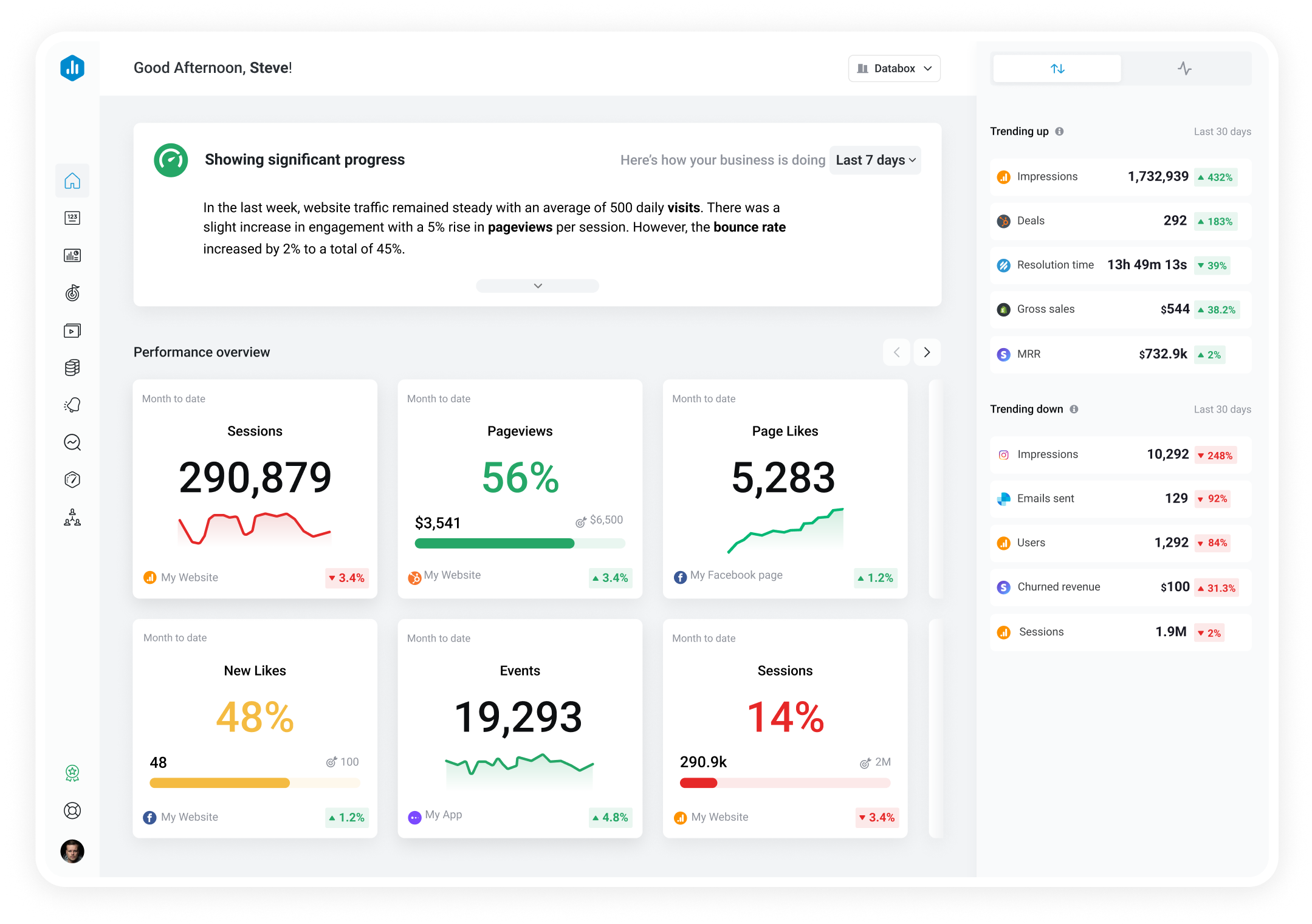Track all of your key business metrics from one screen
GET STARTED
 Shopify
Total sales by New vs Returning Customers
Shopify
Total sales by New vs Returning Customers Equates to Gross Sales - Discounts - Returns + Taxes + Shipping Charges during the specified Date Range split up by New vs Returning Customers.
With Databox you can track all your metrics from various data sources in one place.
Databox is a business analytics software that allows you to track and visualize your most important metrics from any data source in one centralized platform.
To track Total sales by New vs Returning Customers using Databox, follow these steps:
 Goals
Goals Scorecards
Scorecards Metric Digest
Metric Digest Metric Builder
Metric Builder Data Calculations
Data Calculations Performance Screen
Performance ScreenShopify dashboard template which will give you insights and a complete control over your Shopify store.

Use this Shopify advanced report to share high-level and in-depth metrics of your ecommerce store performance. Present key metrics like Orders, Net Sales, New Customers, and more.

